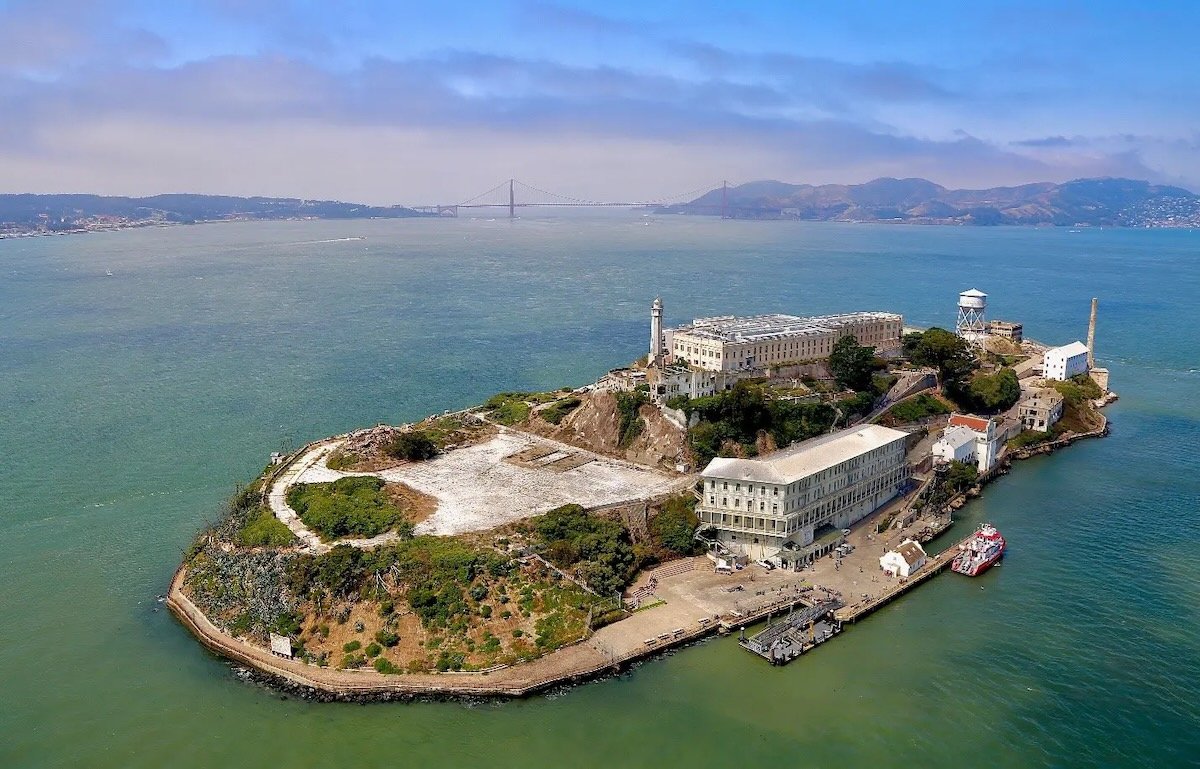Alcatraz Island, located in the chilly waters of San Francisco Bay, is a place with a rich and varied history, one that stretches far beyond its fame as a maximum-security prison. From Native American heritage to military fortifications and a notorious penitentiary, Alcatraz has served many purposes over the years. Today, it stands as one of the most visited historical sites in the United States, drawing millions of tourists every year who seek to uncover the secrets hidden within its walls.
Early History: Native American Significance
Before Alcatraz became a fortress, it was a place of great cultural importance to the native people of the Bay Area. The island was known as “Lehua” or “Black Island” by the Ohlone people who lived along the coast of California. It was a significant location, used primarily as a place to harvest sea birds and their eggs, and it was considered a place of spiritual significance.

The island was also an important navigation point for the indigenous tribes, although little evidence remains of the daily lives of the Ohlone people on the island. The isolation and rough waters surrounding Alcatraz made it an unlikely settlement for permanent habitation, and its role as a resource hub faded as the native tribes were displaced during European colonization.
The Military Era: From Fortress to Military Prison
Alcatraz’s history took a dramatic turn in the mid-1800s, when the U.S. government decided to use the island for military purposes. In 1850, following the Mexican-American War, the federal government designated Alcatraz as the site for a military fortress. The location was ideal for defense, as its position in the bay offered a clear view of any ships entering the waters surrounding San Francisco.
A military fort was constructed, complete with gun emplacements and barracks for soldiers. The fort was never used in battle, but it did serve a role in guarding the Bay Area during the Civil War. By the 1860s, however, the military began to see the potential of Alcatraz for a different purpose—housing prisoners. In 1868, the island officially became a military prison, where prisoners were held, and by the 1890s, it had earned a reputation as one of the most secure locations in the United States for incarcerating criminals.
The Infamous Federal Prison Era
The most famous chapter in Alcatraz’s history began in 1934, when the island was converted into a federal penitentiary. During this time, Alcatraz became synonymous with the highest level of security in the United States. It was not a place for run-of-the-mill criminals, but for those considered too dangerous or troublesome for other prisons.
The federal government invested heavily in transforming Alcatraz into a maximum-security facility. It was equipped with strict regulations, high walls, guard towers, and a system of isolation that prevented escape. The prison housed some of the most notorious criminals of the time, including Al Capone, the infamous gangster, and Robert Stroud, known as the “Birdman of Alcatraz.”
One of the most notable aspects of Alcatraz’s history as a prison was its reputation for being inescapable. The cold waters of the bay, strong tides, and the constant surveillance by armed guards meant that any escape attempt was considered a near impossibility. Yet, despite the odds, there were a few daring escape attempts that captured the public’s imagination.
The most famous of these was the 1962 escape attempt by Frank Morris and brothers John and Clarence Anglin. They meticulously planned their escape, chiseling away at their cells’ walls to create makeshift rafts and dummies to trick the guards. While the trio disappeared into the night, their fates remain a mystery to this day. Though it is believed that they perished in the cold waters of the bay, no conclusive evidence has ever been found.
Closure and Decline
Alcatraz Prison was officially closed in 1963 due to the high costs of maintaining the facility and the deteriorating conditions. The island became somewhat of a ghost town, and its future was uncertain. Over the next few years, the island was repurposed and, in 1969, a group of Native American activists took over Alcatraz in a symbolic protest. The occupation lasted for 19 months and was an attempt to bring attention to the government’s poor treatment of Native American tribes. While the occupation ended in 1971, it brought much-needed attention to the island and its place in American history.
Alcatraz Today: A National Historic Landmark
Today, Alcatraz Island is managed by the National Park Service as part of the Golden Gate National Recreation Area. Visitors can take ferry rides to the island, where they can explore the old prison, military structures, and the beautiful gardens that have flourished over the years. The island also hosts a wide variety of wildlife, including sea birds, which have taken over some of the old prison grounds.
The Alcatraz prison museum is one of the most popular attractions, with informative exhibits and guided tours that walk visitors through its dark and dramatic history. Through these experiences, Alcatraz continues to educate the public about its multifaceted past and the broader historical context it represents.
Conclusion
The history of Alcatraz Island is a reflection of the many complex and sometimes troubling chapters in the history of the United States. From its early days as a place of spiritual significance for Native Americans, to its role as a military fortress, and later as one of the most notorious federal prisons in the country, Alcatraz has witnessed a vast array of events that shaped both the nation and the world.
Today, Alcatraz Island stands as a testament to the resilience of history. Whether it’s the stories of those incarcerated there, the ongoing legacy of its occupation by Native American activists, or the island’s role as an iconic part of American culture, Alcatraz will always hold an enduring place in the annals of American history.

Leave a Reply